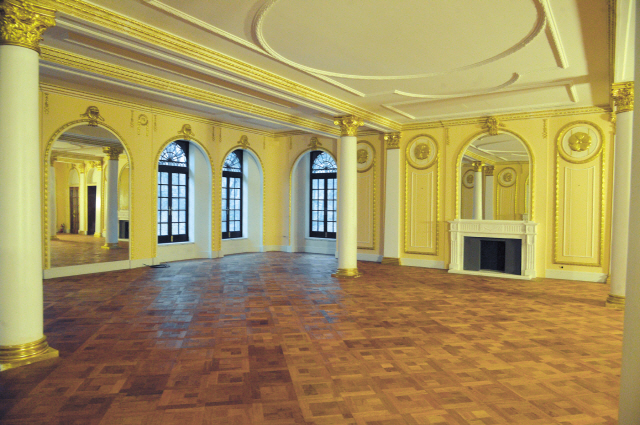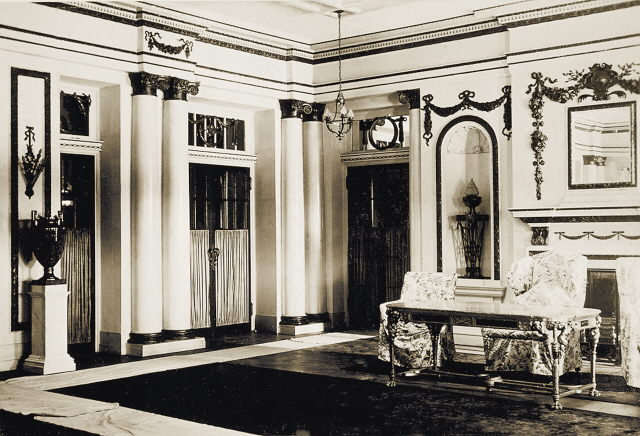 |
The restored reception room of Seokjojeon at Deoksu Palace in central Seoul (Lee Sang-sub/The Korea Herald) |
The Cultural Heritage Administration on Monday unveiled the ongoing restoration of Deoksu Palace’s Seokjojeon building, the Western-style building that served as the residence of the Korean royal family in the early 20th century. The building is to open to the public in the latter part of 2013 as the Daehan Empire History Museum.
“The project that was initiated in 2008 is near completion. We have gathered information from all over the world and have managed to do the ceiling and most of the floor jobs. We are now working on ornaments, curtains, furniture and details,” said Lee Seong-hee, a CHA official.
The three-story building was completed in 1909 after John McLeavy Brown, an accountant of the empire, suggested the construction in 1897 and British architect John Reginald Harding was appointed to design the royal building.
King Gojong lived in Deoksu Palace until the country’s annexation by Japan in 1910 and Yeongchin, the last crown prince of Daehan Empire ― Joseon Kingdom was renamed Daehan Empire in 1897 ― stayed there until the building was transformed into a royal gallery in 1933 by the Japanese colonial authorities.
The colonial authorities destroyed most of the decorations and interior design while the Korean War damaged the building’s exterior. The building was used as a museum showing royal relics until 2005 and then served as the office of Deoksu Palace management.
 |
Reception room in 1919 (The Cultural Heritage Administration) |
For the restoration project, experts collected photographs from old newspapers and documents, drawings by Harding and pictures of other buildings that were built around the same time. They have managed to restore the reception room and the dining halls on the second floor. The glasses and mirrors have been placed and Italian Bianco fireplaces have been installed.
The first floor, which was used as the servants’ quarters, and the royal family’s private rooms including the bedrooms on the third floor, could not be restored to their original appearance as relevant information was scarce.
“Such spaces will be used as exhibition rooms displaying photos and relics of the royal family and the Daehan Empire,” the CHA said.
Some of the original furniture kept at the National Palace Museum of Korea will be returned to Seokjojeon while the administration will purchase missing items from the original British furniture maker who still keeps the catalog and produces the items upon request.
“The Seokjojeon building is significant in the history of architecture in Asia. In the late 1800s and early 1900s, the Rococo style was in vogue and Korea followed the trend through Westerners in the country and Japan. The restoration will be a good opportunity for those who appreciate architecture to take a glimpse into the modern style of the late Joseon era,” said professor Kim Chung-dong of Mok Won University, who headed the advisory body for the restoration.
By Bae Ji-sook (
baejisook@heraldcorp.com)








![[Today’s K-pop] Blackpink’s Jennie, Lisa invited to Coachella as solo acts](http://res.heraldm.com/phpwas/restmb_idxmake.php?idx=644&simg=/content/image/2024/11/21/20241121050099_0.jpg)
